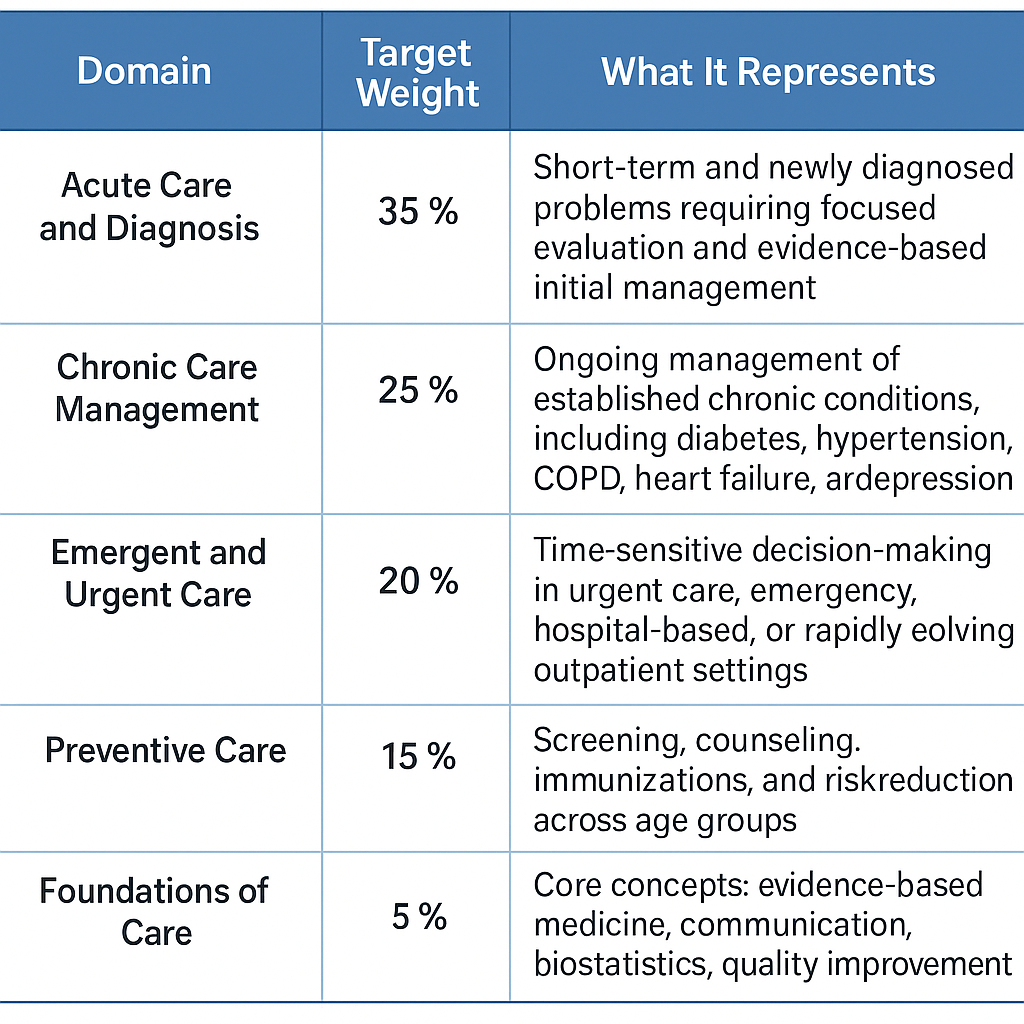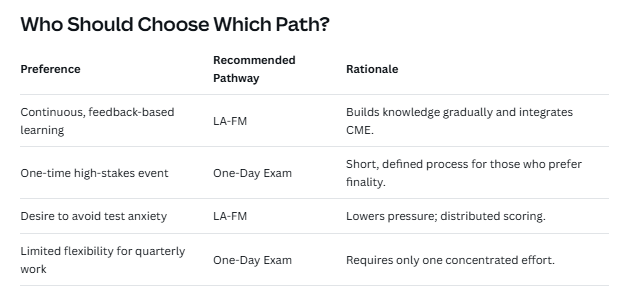What Content is Covered on the ABFM Board Exam?

Topics that are covered in the family medicine board exam
Have you ever wondered why certain topics dominate the American Board of Family Medicine (ABFM) exam while others barely make an appearance? The answer lies in a carefully crafted blueprint designed to ensure newly certified family physicians are primed for real-world practice. Let's unpack this crucial exam.
Understanding the ABFM Exam Blueprint
- Prevalence Matters: The exam mirrors day-to-day realities of family medicine, focusing on common conditions and scenarios.
- Core Competencies Take Center Stage: Non-negotiable skills like chronic disease management, preventive care, and addressing acute conditions are spotlighted.
- Public Health Impact: Conditions significantly affecting population health (e.g., hypertension, diabetes, obesity) receive extra attention.
- Guidelines and Standards: The exam emphasizes topics with well-defined, evidence-based practices.
- Educational Objectives in Focus: Content aligns with residency training programs and continuing medical education goals.
- Continuous Refinement: The exam evolves based on feedback from practicing physicians and ongoing analysis.
Exam Structure and Format
The ABFM Certification Exam contains 300 single-best-answer, standard multiple-choice questions that follow the ABFM Blueprint. Each question is in paragraph form with an answer set containing one correct answer and three or four incorrect answers.
The exam is divided into four sections, each lasting 95 minutes, with a total of 100 minutes of pooled break time between sections. The entire exam appointment takes approximately 8 hours to complete, with 6 hours and 20 minutes of total testing time.
Each section of the examination consists of both pictorial and non-pictorial multiple-choice questions. Pictorial questions include stimulus images such as photos of X-rays, ECGs, rhythm strips, and other relevant pictures. These images will be presented in a separate tab along with the relevant test question on the computer screen. You will need to interpret ultrasound images for pictorial questions on the Certification Exam. The exam is administered and proctored by staff at Prometric in approximately 350 locations across the United States and 180 international locations.
- Question Format: Multiple-choice questions based on clinical scenarios, assessing knowledge application in practical situations.
- Administration: Computer-based format at designated testing centers.
Major Content Areas
The exam covers a broad spectrum of family medicine topics, with varying emphasis:
- Cardiovascular Diseases: 12-14%
- Musculoskeletal: 12-14%
- Respiratory: 10-12%
- Endocrine: 8-10%
- Reproductive—Female: 8-10%
- Nervous System: 7-9%
- Psychogenic: 6-8%
- Gastrointestinal: 5-7%
- Integumentary: 5-7%
- Population-Based Care: 4-6%
- Nephrologic/Urologic: 3-5%
- Special Sensory: 2-4%
- Reproductive—Male: 1-3%
- Procedural Skills: 1-3%
Key Topics Covered
- Preventive care
- Chronic disease management
- Acute care
- Pediatrics
- Geriatrics
- Obstetrics and gynecology
- Behavioral health
Preparation Strategies
It is highly recommended to dedicate 10-14 hours per week for three or more months. Start by taking a practice exam simulation to identify your weaknesses. Focus on mastering these difficult topics, and then reassess your overall knowledge with comprehensive exam simulations. The best FM board reviews are designed to support this approach.
Keep the following study tips in mind while preparing for the exam:
- Focus on core areas with higher percentage coverage first.
- Expect mostly general questions from subspecialty areas.
- Practice applying clinical knowledge to practical scenarios.
- Understand the exam's blueprint to study more efficiently.
Remember, the American Board of Family Medicine exam aims to produce well-rounded physicians capable of providing comprehensive, effective care. It's not just about passing a test—it's about preparing you for the diverse challenges you'll face in your career. Every question you encounter reflects the skills and knowledge you'll need in day-to-day practice.
By understanding the exam's focus and structure, you can tailor your preparation to become not just a successful test-taker, but a more effective family physician ready to meet the demands of modern healthcare.
Think you're ready to pass the ABFM Certification Examination? Prepare with Med-Challenger and gain access to thousands of board review practice questions, each with detailed explanations, didactic content and illustrations. Our Family Medicine question bank follows the exam content outline for the ABFM Certification Examination, ensuring comprehensive coverage and effective preparation.
Before you study, don't forget to save the important ABFM exam dates below:
| Fall 2024 Registration Begins | July 12, 2024 |
| First Deadline to Submit Fall 2024 Online Application (no fee) | August 19, 2024 |
| First Deadline to Submit Fall 2024 Online Application (late fee applies) | September 23, 2024 |
| Fall 2024 Examination Dates | September 10 -13, 2024 |
| 2024 Written Exam Dates | November 11-19, 2024 |
| Examination Results (Tentative) | December 27, 2024 |






